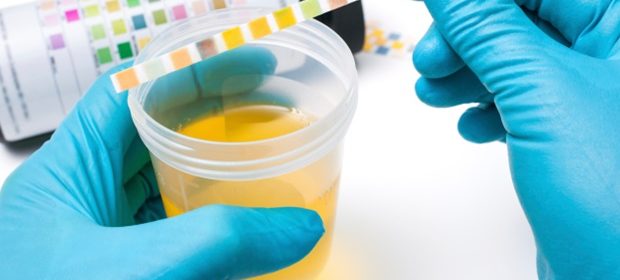Peyronie's Disease Treatment and Prognosis

Peyronie’s disease represents a progressive, multifactorial condition of the penis characterized by the development of fibrotic penile plaques and subsequent penile deformity. Men can present with pain, penile curvature, erectile dysfunction and penile shorting, as well as with feelings of decreased libido and low self-esteem.
There is a range of treatment options for Peyronie’s disease – from oral pharmacotherapy to injections, traction and surgery. However, only a handful of therapy approaches showed efficacy when interrogated in randomized-controlled trials. In any case, principal aims of treating this condition should be reduced penile deformity and improved sexual function, with subsequently improved quality of life. In addition, the chosen treatment modality should address the psychological implications of this disease.
Oral Medical Therapy
A myriad of oral agents are promoted for early treatment of Peyronie’s disease. Some of them are potassium para-aminobenzoate or Potaba (which decreases serotonin levels with an effect on scar formation), pentoxifylline (which blocks transforming growth factor β1 and the deposition of collagen type I), tamoxifen (estrogen receptor blocker) and carnitine (acetyl coenzyme A inhibitor). However, for all these agents there is a lack of current randomized data to fully support their routine usage.
The role of vitamin E in the treatment of Peyronie’s disease has been thoroughly researched, with the general consensus that its antioxidant properties may ameliorate pain during the acute phase of the disease, without any effect on the curvature. Nevertheless, limited evidence from randomized, double-blind trials have resulted in the use of vitamin E (but also other antioxidants) merely as an adjunctive treatment.
Injection Modalities
Several various intralesional therapies have been put forward and studied for the management of Peyronie’s disease. The use of steroids and their anti-inflammatory characteristics with direct injections into plaque resulted in good responses in a range of short-term studies; nevertheless, such intralesional application of steroids may result in a plethora of local adverse effects (such as skin thinning and tissue atrophy).
Collagenase Clostridium histolyticum (CCH) therapy has been approved for patients with palpable disease and curvature of at least 30 degrees. This drug acts on collagen types I and III (which are the primary collagen found within Peyronie’s lesions) by cleaving the triple helix of the fibrils. This is the first medication approved by US Food and Drug Administration (FDA) due to its positive effects, although side-effects such as hematoma, bruising or pain may appear.
Calcium channel blocker verapamil has also been used intralesionally in Peyronie’s disease, which results in improvement by inhibiting extracellular transport of collagen, as well as by upgrading collagenase activity. A majority of trials using this treatment approach have demonstrated an improvement in curvature and plaque size, as well as a reduction in pain.
Interferon therapy is also currently included in American and European guidance documents, although the data has shown a modest benefit (especially in curvature improvement) with potentially substantial side-effects. Interferon acts by affecting collagen in Peyronie’s disease by promoting collagenase activity and inhibiting the proliferation of fibroblasts.
Mechanical and Non-Surgical Treatments
Local use of extracorporeal shock wave therapy (ESWT) has is used as a second or third-line treatment approach in Peyronie’s disease, with improvement in pain shown by certain randomized trails. Basically, the aim of this treatment is to fracture the calcified plaques, although the exact effect on the disease pathophysiology is not clear.
Several small studies have shown the efficacy of penile traction therapy in decreasing penile curvature, which would support the role of traction devices (but also vacuum tumescence) in the treatment of this condition. However, significant drawbacks are long duration of treatment (up to eight hours per day), discomfort and inconvenience.
Surgical Approaches
The goal of any surgical approach is simple: to make the two penile sides equal in size (either by lengthening the shorter side or vice versa). The ideal candidate for surgical treatment is a man who has tried conservative therapy with no results, and whose indentation, curvature or erectile dysfunction precludes sexual intercourse.
When a surgeon tries to lengthen the side that is shorter, a graft (composed of cadaveric tissue, autologous tissue, or some synthetic material) is interposed. On the other hand, a plication procedure is used to shorten the longer side, with different techniques and modifications available to suit the individual patient.
In conclusion, surgical treatment of Peyronie’s disease in the last decade can be shortly described as “less is more”, which aims to match satisfactory outcomes with low number of side-effects. There is hope that future therapeutic approaches will be better aimed at curing the disease by addressing underlying pathophysiological mechanisms, rather than just limiting debilitating mechanical sequelae.
Reviewed by Afsaneh Khetrapal BSc (Hons)
Sources
- https://f1000research.com/articles/5-2372/v1
- https://www.ncbi.nlm.nih.gov/pubmed/27234953
- https://www.ncbi.nlm.nih.gov/pmc/articles/PMC1473022/
- https://www.ncbi.nlm.nih.gov/pmc/articles/PMC4857830/
- https://www.ncbi.nlm.nih.gov/pmc/articles/PMC4535719/
- https://www.ncbi.nlm.nih.gov/pmc/articles/PMC4708604/
- Cavallini G. Therapy: A General Approach. In: Cavallini G, Paulis G, editors. Peyronie’s Disease: A Comprehensive Guide. Springer International Publishing Switzerland, 2015; pp. 83-84.
Further Reading
- All Peyronie's Disease Content
- What is Peyronie’s Disease?
- Peyronie’s Disease Causes
- Peyronie’s Disease Diagnosis
- Peyronie’s Disease Symptoms
Last Updated: Aug 23, 2018

Written by
Dr. Tomislav Meštrović
Dr. Tomislav Meštrović is a medical doctor (MD) with a Ph.D. in biomedical and health sciences, specialist in the field of clinical microbiology, and an Assistant Professor at Croatia's youngest university – University North. In addition to his interest in clinical, research and lecturing activities, his immense passion for medical writing and scientific communication goes back to his student days. He enjoys contributing back to the community. In his spare time, Tomislav is a movie buff and an avid traveler.
Source: Read Full Article